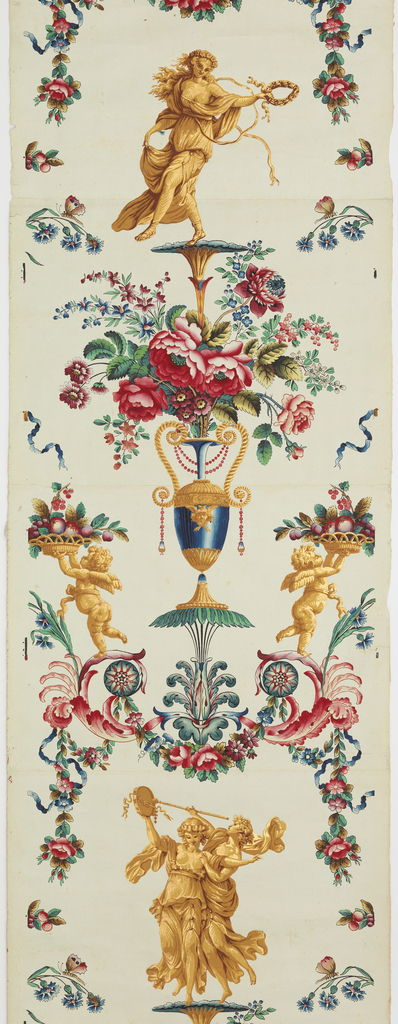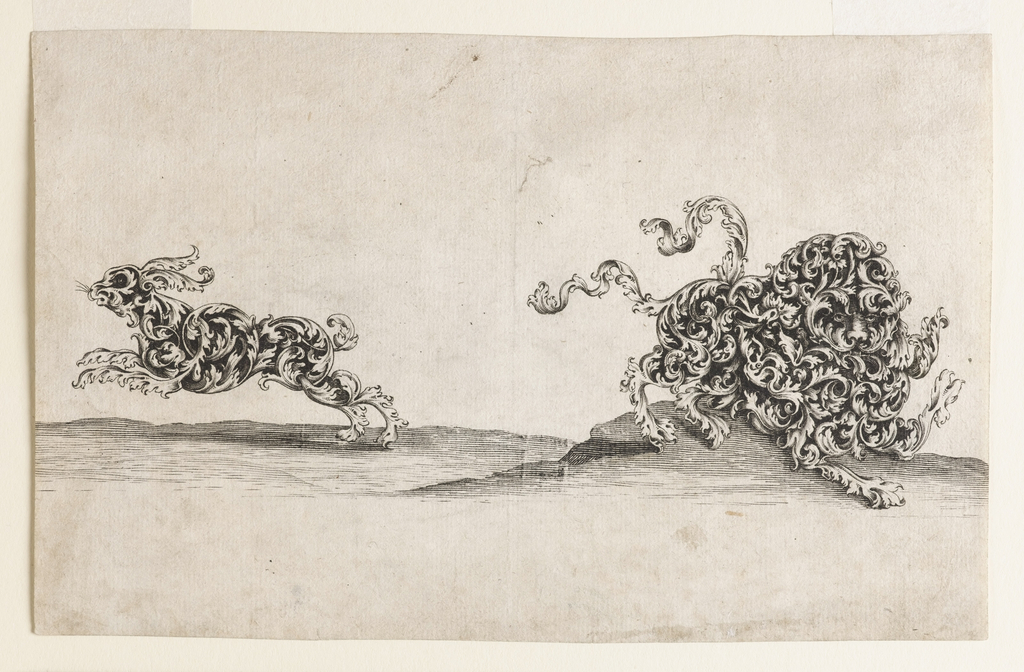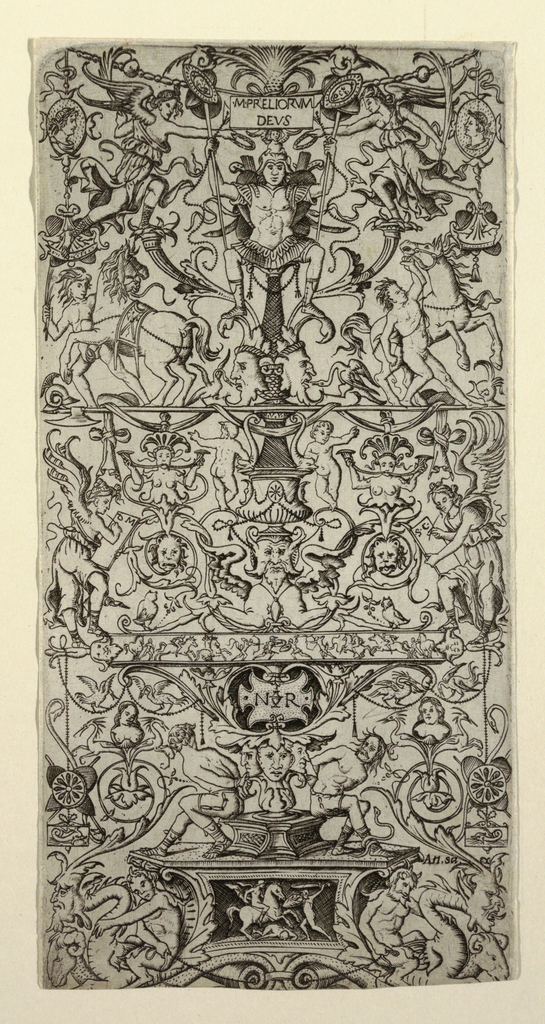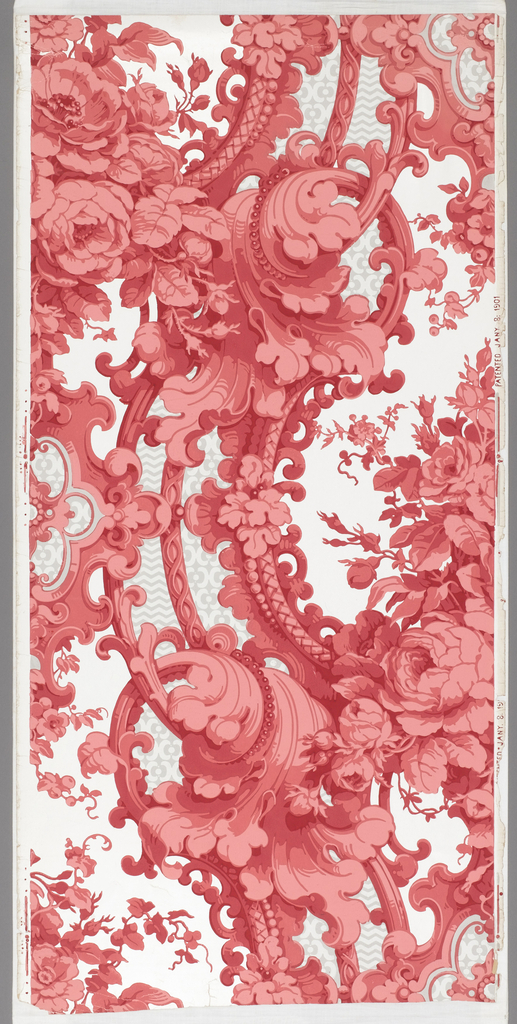France started making advancements in wallpaper manufacture in the 1770s, and by the 1780s they were making papers of a quality that has never been surpassed. Réveillon is one of the better-known manufacturers from this period, and was most celebrated for his arabesque designs, which were influenced by the recently discovered wall paintings at Herculaneum...
Walter Crane was one of the most successful of late Victorian designers, and this must be one of his most beautiful patterns for wallpaper. It is a multi-layered design featuring several fantastical motifs such as winged sphinxes, winged lions, peacocks, the biblical Tree of Knowledge with the serpent wrapped around it, and medieval standards topped...
This frieze represents a very late example of the English Regency style in wallpaper. The Regency style is largely connected to the period between 1800-1830 and is considered the final development of English Neoclassicism, the dominant design style in Britain for most of the late 18th-century and early-19th century. The date of this paper places...
A lion and a hare are composed entirely of scrolling acanthus leaves in this late-seventeenth-century engraving. It is the fifth plate from a suite of six designs for gold ornament, entitled Neu-ersonnene Gold-Schmieds Grillen (New Designs for Ornaments in Gold). The acanthus motif, whose origins date to ancient Greece and Rome, was omnipresent in European...
Have you ever wondered where you could find a spotted, two-legged creature with the body of a lizard, the ears of a goat, the wings of a bird and the claws of a chicken? How about a monster with the head of a dolphin, ears of acanthus leaves, the body of a snake, and a tail...
I have always loved these Rococo-style wallpaper designs with their large scale boldness, trompe l’oeil effects, and attention to detail. This paper is rather late in date for a Rococo wallpaper but it was a new design in 1901 as noted by the “Patented January 8, 1901” printed in the selvedge. The Rococo style was...
This neo-classical wallpaper frieze is a broad horizontal band meant to decorate a wall near the ceiling. I was immediately drawn to the three-dimensional quality of the block-print, as well as the intricate details that can be seen in the wings, imagery on the urn, and adornments on the confronted figures. The various Greek and...






